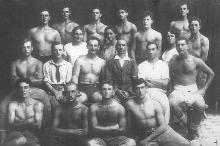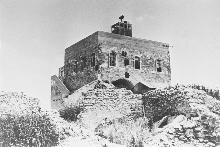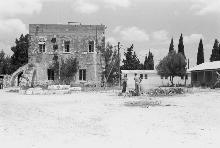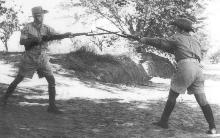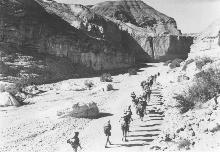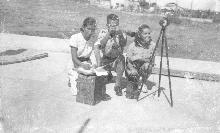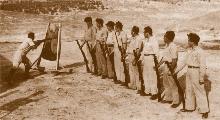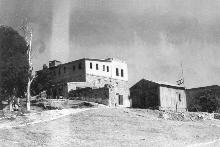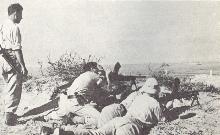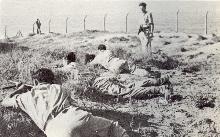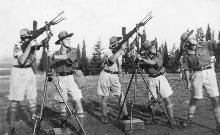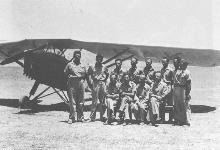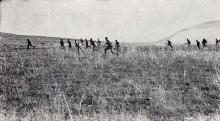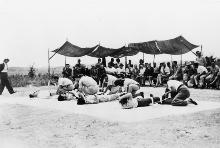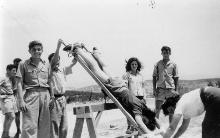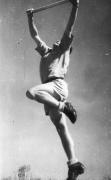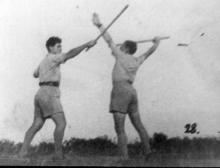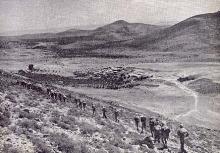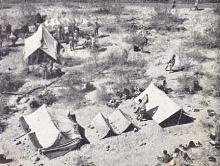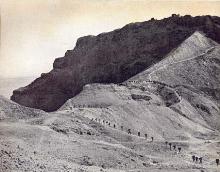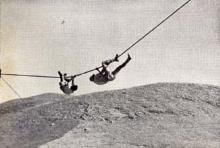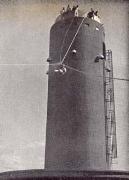| Command & training |
Training took place in conjunction with the various missions, and the ability to mobilize instructors and weapons in underground conditions that varied from time to time and from location to location. As a result, training programs differed from place to place. In the early 1920's, Commander Yosef Hecht and David Yafeh, his chief instructor, participated in discussions when it became apparent that the shortage of instructors limited more comprehensive training programs. Small settlements demanded that the Command provide them with instructors and weapons in order to train. The existing instructors served in different armies and each instructed according to their past experience. Therefore the Hagana compiled unified training methods and established national instructor training courses. During the bloody Arab Riots of 1929, it became evident that Hagana members were not properly trained. Commander training courses put emphasis on tactical training, mobilization & fortifications training adapting to Hagana territorial and organizational changes. Training programs developed increasingly as a result of the 1939 Arab uprising. Night exercises were increased; British collaboration improved training professionally and helped expand training programs due to the legalized status of the Notrut. Hagana courses included army maneuvers using enemy simulations; training programs integrated with field operations. Training subjects: from individual to full battalion combat training, settlement defense, weaponry, heavy weaponry, sabotage, day & night field training, dog training, cavalry, motorized patrols, topography, first aid, fire fighting, signals and wireless operation. The training bureau (LHD) started operation at the beginning of 1939 and from then on was responsible for courses, expanding the scope of instruction, supervision, tools and teaching aids and composing instruction manuals. Mandatory training time frames were determined; Regulations (1941) stated that any individual volunteering to the Hagana must participate in a training program. Service was obligatory for the first 3 years. Hish (Field Combat Corps) members were required to train 6 hours a week and participate in 2 week courses every year; Chim - 4 hours a week and participation in an intensive course once a year. Those transferred to the reserves after the completion of mandatory service were required to devote 6 hours a month in Hish and 6 hours every 3 months in Chim. In addition to regular training, there were specialized courses such as sniping, reconnaissance, wireless communications, sabotage, signals, topography & navigation, first aid, medical service and heavy weaponry (machine guns & mortars), close combat courses and special H.Q courses. Palmach training was especially intensive: training took place for 2 weeks each month, and included outdoor training and field marches. Training programs were reduced once again during the struggle against the British Government after World War II while the Hagana focused on what was vital for maintaining the struggle, such as seamanship required for illegal immigration. Training programs and mass enlistment by decree intensified towards the War of Independence. Hish brigades were forced to train their men while fighting, and Hagana combat brigades established basic training camps where the junior command was trained. At the same time special training programs were developed in the various professional corps. Training programs were held in detention camps in Cyprus and in refugee camps throughout Europe. | |||||||||||

